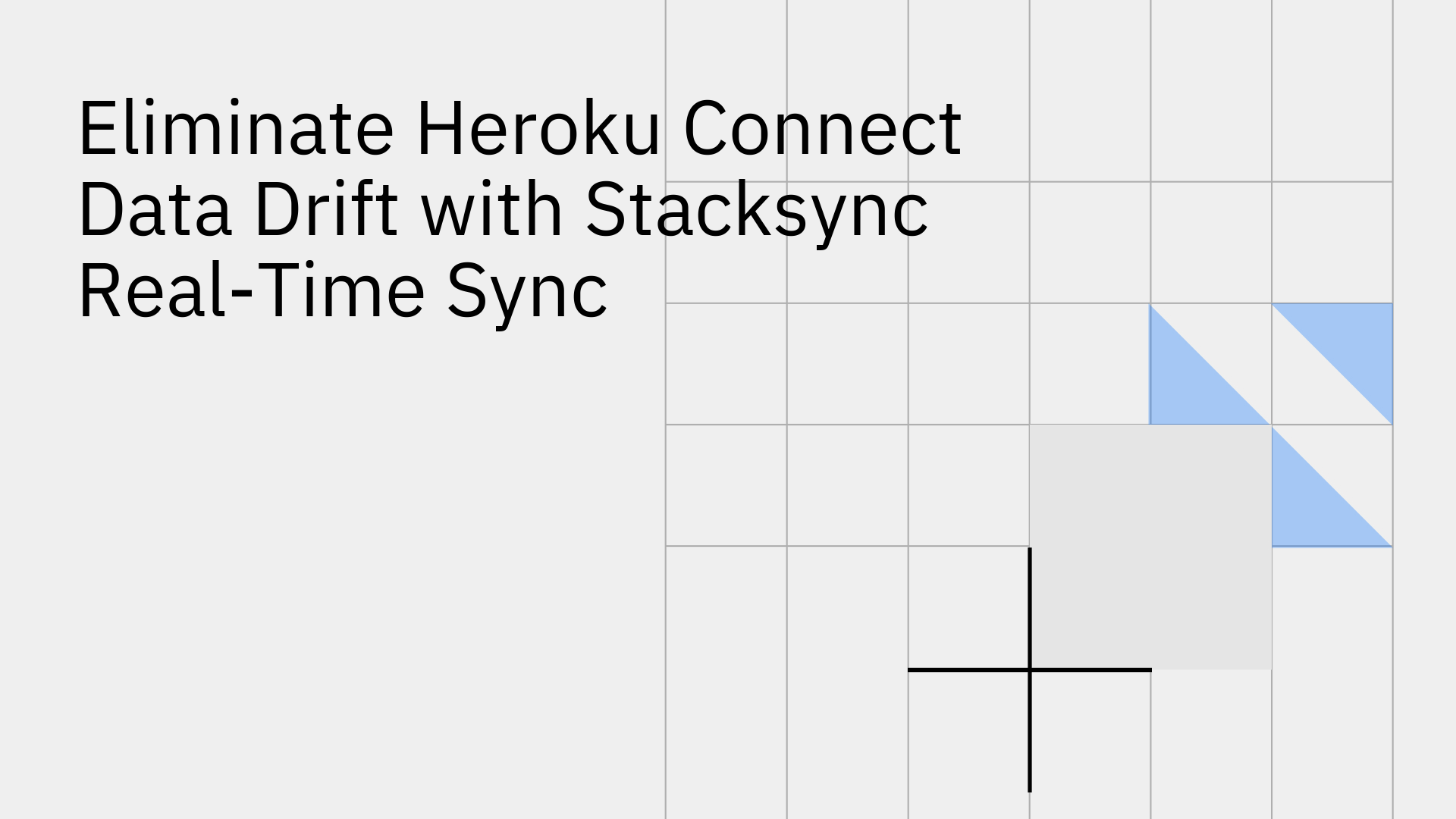
When your business relies on data being consistent between Salesforce and your Heroku Postgres database, even small discrepancies can cause big problems. This issue, known as Heroku Connect data drift, happens when the data in your database no longer matches what's in Salesforce.
The consequences can be severe, leading to unreliable analytics, poor customer experiences, and broken internal workflows. This isn't just a random glitch; it's a problem rooted in Heroku Connect's underlying polling architecture. Fortunately, modern solutions like Stacksync are designed to eliminate data drift entirely through true, real-time, two-way synchronization.
So, what exactly is data drift? In the context of Heroku Connect, it’s the state where your Heroku Postgres database is not an exact, up-to-the-minute copy of your Salesforce data. This occurs because Heroku Connect doesn't watch for changes constantly. Instead, it relies on a polling system that periodically checks for updates, often at intervals of 10 minutes or more [1]. Anything that happens between these checks creates a window of inconsistency, or drift.
Several factors contribute to data becoming out of sync when using Heroku Connect:
Data drift isn't just a technical headache; it has real-world consequences for your business:
Stacksync was designed from the ground up to prevent data drift through a modern, event-driven architecture. Unlike tools that periodically check for updates, Stacksync captures changes the moment they happen, ensuring your data is always perfectly synchronized. This makes it a great alternative to Heroku Connect for any business that values data accuracy.
Instead of polling, Stacksync uses technologies like webhooks to instantly receive notifications whenever a record is created, updated, or deleted. This applies to changes made in Salesforce and your database. The sync is truly "two-way," meaning a change in Postgres is reflected in Salesforce just as quickly as a change in Salesforce is reflected in Postgres. These syncs happen in milliseconds, not minutes, which effectively eliminates the possibility of data drift.
Troubleshooting sync issues in Heroku Connect often involves manually digging through complex logs to figure out what went wrong [4]. Stacksync takes a proactive approach with its Issue Management Dashboard. It provides real-time alerts and a clear, user-friendly interface to see any sync errors as they happen. With features like one-click retry and revert, you can resolve issues instantly, ensuring no failure goes unnoticed or unresolved.
Hitting Salesforce API quotas is a common pain point for growing businesses. Stacksync solves this with its Smart API Rate Limits feature. It automatically adjusts to your data traffic and system capacity, ensuring your sync process never hits those frustrating quotas. This means your sync is never throttled, and you can scale to millions of records without worrying about your integration breaking. Stacksync provides a real-time sync that scales with your business needs.
When using Heroku Connect, heroku connect data drift is not a matter of if, but when. Its reliance on a polling architecture fundamentally guarantees that your data will be out of sync at times. For mission-critical applications where data accuracy is non-negotiable, a batch-based solution is no longer sufficient.
Stacksync offers the definitive solution for engineering and operations teams that need to build reliable, scalable, and drift-free data pipelines between Salesforce and their databases. By embracing a real-time, event-driven model, Stacksync ensures your data is always consistent, your workflows run smoothly, and your teams can trust the information they rely on.
Ready to see the difference? Book a demo or start your free trial to experience drift-free synchronization and explore other real-time data sync alternatives.